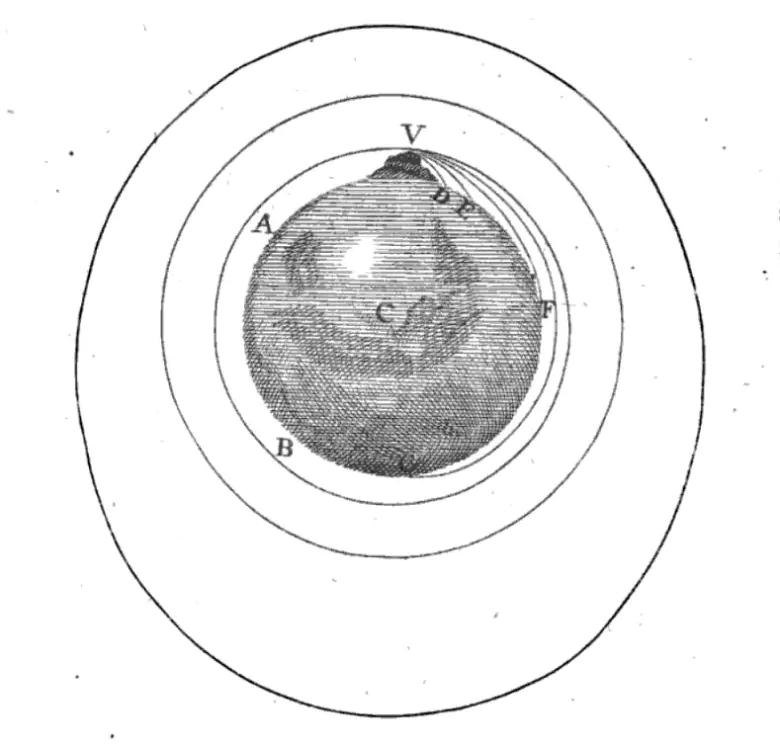'Throwing' satellites into space may be an alternative to launching rockets

A private startup company called Spinlaunch could be the first to throw a payload into space rather than use a rocket for primary propulsion.
The company has said that it’s received millions of dollars in funding, and a prototype launch contract from the U.S. Department of Defence for its technology.
The company is apparently developing a kind of spinning slingshot that will hurl projectiles up from the ground at high velocity in an attempt to lower the cost of spaceflight.
Spinlaunch was founded several years ago, and has been remarkably secretive about its technology. The small amount of information they’ve released indicates that they will use a “mass accelerator” to fling a dart-shaped vehicle at incredible speeds into the sky. A chemical rocket would then be ignited to finish boosting the vehicle into space.
It is, in essence, the same principle used by ancient hunters who swung a sling around their head faster and faster then released it at the right moment so their projectile stone would fly off at great speed toward their intended prey.
There are many technologies they could be using, but the company hasn’t said what they are. It could be a circular electromagnetic rail gun, or some kind of giant rotating centrifuge. Whatever the mechanism, the idea is to reduce the cost of delivering payloads to space through the use of a new technology.
This will not be for human spaceflight. The g-forces involved spinning an object that fast would be far beyond what the human body could withstand. Most likely this will be appropriate for small (and presumably pretty robust) satellites.
The idea of reaching space without a rocket is not new. In 1686, Isaac Newton’s famous book Principia he envisioned a cannon on a mountaintop to demonstrate the principle of achieving orbit. If a cannon could be fired at high enough speed, the curve that the cannonball follows would match the curve of the Earth so it would fly all the way around the planet and return to strike the back of the cannon an hour and a half later.
Newton wasn’t proposing this method for spaceflight, but he did demonstrate how the laws of gravity and ballistics could be used to reach orbit by giving an object a mighty initial push, rather than using the more constant propulsion of a rocket..
Later, in 1865, science fiction writer Jules Verne wrote From the Earth to The Moon in which an enormous cannon dug straight into the ground blasts a capsule containing three passengers all the way to the moon. Interestingly, he located the launch site in Florida, where the actual moon launches took place and Verne’s capsule closely resembled the Apollo Command Module which also carried 3 astronauts.
One hundred years later, the U.S. and Canadian defence departments cooperated on a project called HARP (High Altitude Research Project) to study the ballistics of spacecraft re-entry. They used modified naval guns which fired massive 402 mm diameter projectiles to high altitudes.
Fired from a test site in Yuma, Ariz., one of their shells reached a record altitude of 180 kilometres, which qualifies as space, but it was not travelling fast enough to reach orbit. The project was eventually cancelled but the remains of one of the guns used in the tests can still be seen in Barbados today.
The biggest problem facing projectiles launched from the ground is that they have to be launched at very high initial speed, on the order of many thousands of kilometres per hour and many times the speed of sound, to reach space. And to stay in space, they have to go even faster. In fact, to achieve low Earth orbit, they have to make it to space still travelling at about 28,000 km/h.
That means they have to launch at even higher speeds. The projectile passes through the thickest part of the atmosphere as soon as it leaves the device, when it is travelling at its highest velocity. So air resistance and air friction are at their peak right at the beginning of the flight, slowing the projectile down and heating it up almost instantly.
As a result, any payload inside the projectile must withstand tremendous G-forces at launch and temperatures of thousands of degrees before it even reaches space.
Spinlaunch recently obtained funding to break ground at Spaceport America in New Mexico, home to the space tourism company Virgin Galactic.
There are tremendous obstacles to overcome if they want to throw an object into space from the ground. However, given how complex and expensive conventional rockets are, if it works, this simpler slingshot method could cut the cost of putting a small satellite into orbit considerably.
It is interesting that an old idea of simply throwing an object really fast and really high might still be used to get off the planet.





